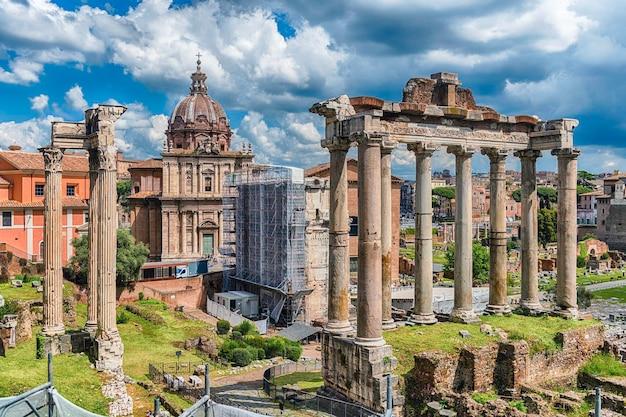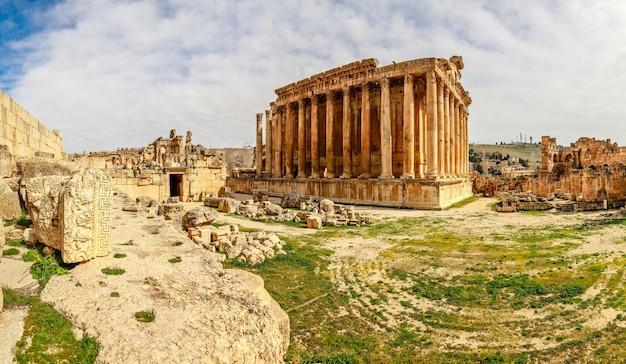Ancient Rome, a civilization that thrived thousands of years ago, continues to have a profound influence on the modern world – including the United States. From its system of government to its legal principles, Rome’s legacy can be seen in various aspects of American society today.
One of the most significant contributions of ancient Rome to the United States is its legal framework. The Romans developed a comprehensive legal system that emphasized fairness and justice. Known as Roman law, it provided a set of rules and principles that governed society. This system was unique in many ways and laid the foundation for the development of modern legal systems around the world.
The impact of Rome on the United States extends beyond law. The ancient Greek and Roman governments also played a crucial role in shaping the American government. The Founding Fathers of the United States drew inspiration from these ancient civilizations when designing the structure of the new nation. The concepts of republicanism and representative democracy, which were prevalent in both ancient Greece and Rome, heavily influenced the formation of the American government.
In this blog post, we will delve deeper into how ancient Rome influenced the United States, exploring the unique aspects of Roman law, its impact on American legal systems, and the influence of ancient Greek and Roman governments on the structure of the United States government. Join us on this journey as we unravel the fascinating connections between these ancient civilizations and the birth of a modern superpower.

How Ancient Rome Left Its Mark on America
Rome in the United States? You Bet!
When you think of ancient Rome, what comes to mind? Perhaps images of togas, gladiators, and grand architectural wonders like the Colosseum or Pantheon. But did you know that the influence of ancient Rome can still be felt today, thousands of years later, in the United States? That’s right, America has its fair share of Roman-inspired legacies, and we’re here to spill the beans about them.
Architecture: From the Colosseum to Congress
One of the most evident ways ancient Rome influenced the United States is through its architecture. Just take a stroll through Washington, D.C., and you’ll encounter a plethora of Roman-inspired buildings. The iconic dome of the United States Capitol, for instance, draws inspiration from the majestic dome of the Pantheon, which was an engineering marvel in its time. This Roman influence extends beyond the Capitol to various government buildings, museums, and monuments across the nation’s capital.
Law and Governance: All Roads Lead to Rome
Ancient Rome was no stranger to well-functioning systems of governance, and in this arena, their impact on the United States is undeniable. The Founding Fathers, revered architects of the American political system, looked to ancient Rome for inspiration when designing the structure of the new nation. The concept of a republican form of government, with a separation of powers into three branches, was heavily influenced by Rome’s republican model. It’s safe to say that when it comes to governance, all roads lead to Rome!
Latin Language: More Than Caesar’s Salad
You may have thought that Latin was simply a language of the past, but think again! Latin, the language of ancient Rome, has made its indelible mark on various facets of American life. Legal jargon, for example, is overflowing with Latin phrases like “pro bono,” “habeas corpus,” and “quid pro quo.” Latin mottos also find their way onto seals and emblems, giving them an air of sophistication and historical grandeur. So yes, Latin may be a “dead” language, but its spirit lives on in the United States.
Infrastructure: When in Rome, Build Roads
The Romans were renowned for their infrastructure projects, and they left quite an impression on the United States in that department too. The Roman road system, known as the “limes,” ensured efficient transportation and communication throughout the empire. Fast forward to modern-day America, and you’ll find a similar commitment to building an extensive network of roads and highways. The concept of a connected nation owes a debt of gratitude to ancient Rome’s innovative road-building techniques.
Spectacle and Entertainment: From Gladiators to Gridiron
Ancient Rome was famous for its grand spectacles, from gladiatorial battles in the Colosseum to chariot races at the Circus Maximus. While we’ve traded in gladiators for football players, the spirit of spectacle and entertainment persists in the United States. The frenzy surrounding sports events like the Super Bowl or the Olympics rivals the excitement of a Roman crowd witnessing a thrilling chariot race. So the next time you’re at a stadium, take a moment to appreciate the link between Rome’s love for spectacle and our modern-day obsession with sports.
As you can see, ancient Rome’s influence on the United States goes far beyond togas and gladiators. Through architecture, law, language, infrastructure, and entertainment, Rome’s legacy has woven itself into the very fabric of American society. So the next time you marvel at the majestic dome of the Capitol or toss around a Latin phrase, remember, Rome wasn’t built in a day, but its influence on America has lasted for centuries.

FAQ: How did ancient Rome influence the United States?
What was unique about Roman law
Roman law was truly ahead of its time, paving the way for the legal systems we have today. Here are a few fascinating aspects of Roman law that set it apart:
A Legal System for Everyone
Roman law was meant to be inclusive, ensuring that all citizens had access to justice. It was structured in a way that allowed individuals to argue their cases in court and seek legal resolutions.
The Birth of Legal Precedence
One of the standout features of Roman law was the concept of legal precedence. This meant that previous court decisions served as a guide for future cases, establishing a foundation for consistent interpretation and application of the law.
Innocent Until Proven Guilty
Roman law introduced the principle that a person was innocent until proven guilty. This revolutionary concept shifted the burden of proof onto the accuser, providing individuals with a fair chance to defend themselves.
What was Roman law called
Roman law had a stylish name that made it sound like something straight out of a gladiator movie: “Ius Romanum.” Just saying it out loud gives you a sense of the grandeur and authority that it held.
How did ancient Rome influence the United States
Ancient Rome left an indelible mark on the United States, shaping its government, architecture, and even daily life. Here are a few ways in which the Roman Empire continues to influence the land of the free:
Republican Government
The United States adopted Rome’s idea of a republican government, where elected representatives make decisions on behalf of the people. This system of checks and balances, borrowed from the Roman Republic, has stood the test of time and remains a pillar of American democracy.
Architectural Marvels
You don’t need a time machine to experience Roman architecture – just head to Washington D.C.! The capital city showcases striking buildings inspired by ancient Rome, such as the Lincoln Memorial and the United States Capitol. These grand structures remind us of Rome’s influence on the principles of justice, law, and governance.
Latin Roots in Legal Jargon
If you’ve ever felt confused by the complex legal jargon used in the U.S. judicial system, you can thank the Romans. Latin, the language of ancient Rome, provided the foundation for many legal terms that lawyers and judges still use today. So, the next time you hear “habeas corpus” or “ipso facto,” remember that Rome’s linguistic influence is alive and well in American courtrooms.
How did the ancient Greek and ancient Roman governments influence the government of the United States
The ancient Greeks and Romans not only knew how to throw lavish parties and conquer empires, but they also had a heavy hand in shaping American government. Brace yourself for a whirlwind tour of this ancient influence:
Greek Philosophy Meets Democracy
The Greeks introduced the world to the concept of democracy, and the United States can’t get enough of it! American democracy takes inspiration from the systems developed in ancient Athens, with an emphasis on citizen participation and majority rule.
Quadriga Power: Montesquieu’s Inspiration
The Romans may not have had the internet or smartphones, but they did have a philosopher named Montesquieu who admired their government structure. Montesquieu, an inspiration for the U.S. Constitution, admired the Roman Republic’s separation of power into three branches: executive, legislative, and judicial. The United States wisely adopted this idea, ensuring a balanced and fair government.
Lessons in Federalism
The ancient Roman Republic was made up of different regions, each with its own laws and institutions, operating under the umbrella of a central government. This concept of federalism, where power is divided between different levels of government, influenced the U.S. system, with states retaining their own sovereignty while still being part of a unified nation.
So there you have it, a glimpse into how ancient Rome left its mark on the United States. The next time you spot a toga-clad senator or hear a legal term in Latin, you’ll know that the ghost of Julius Caesar might just be lurking around the corner.
